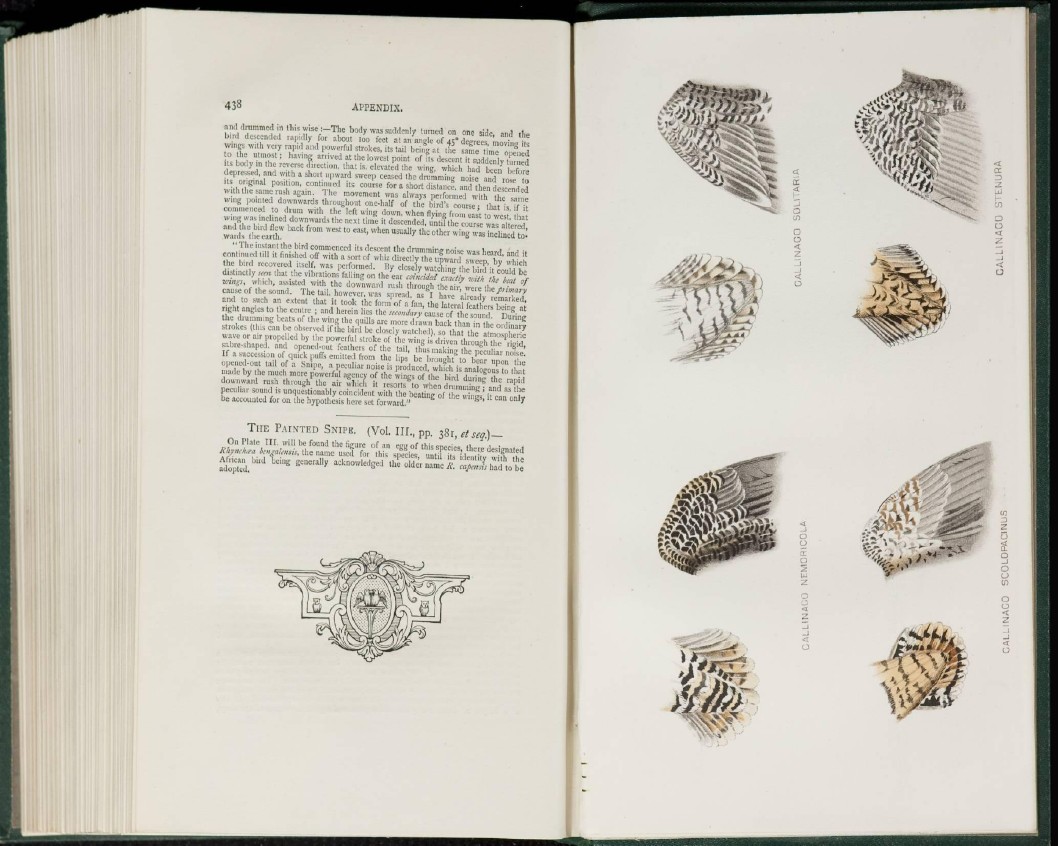
433 APPENDIX.
nnd drammed in this wise :—The body was suddenly turned on one side, and the
bird descended rapidly for about loo feet at an angle of 45" degrees, moving its
wings with very rapid and powerful strokes, its tail being at the same time opened
to the utmost; having arrived at the lowest point of its descent it suddenly turned
its body in the reverse direction, that is. elevated the wing, which had been before
depressed, and with a shoit upward sweep ceased the drumming noise nnd rose to
its original position, continued its course for a short distance, and then descended
with the same rush again. The movement was always performed with the same
wing pointed downwards throughout one-half of the bird's course; that is. if it
commenced to drum with the left wing down, when flying from east to west, that
wing was inclined downwards the next time it descended, until the course was altered,
and the bird flew back from west to east, when usually the other wing was inclined towauls
the earth.
"The instant the bird commenced its descent the dramming noise was heard, and it
continued till it finished off with a sort of whiz directly the upward sweep, by which
the bird recovered itself, was performed. P>y closely watching the bird it could be
distinctly MM that the vibrations falling on the ear coincided exactly ivith the beat of
tvings, which, assisted with the downward rush through the air, were the/;imary
cause of the sound. The tail, however, was spread, as I have already remarked,
and to such an extent that it took the form of a fan, the lateral feathers being at
right angles to the centre ; and herein lies the secondary cause of the sound. During
the (humming beats of the wing the quills are more drawn back than in the ordinary
strokes (this can be observed if the bird be closely watched), so that the atmospheric
wave or air propelled by the powerful stroke of the wing is driven through the rigid,
sabre-shaped, and opened-nut feathers of the tail, thus making the peculiar noise.
If a succession of quick puffs emitted from the lips be brought to bear upon the
opened-out tail of a Snipe, a peculiar noise is produced, which is analogous to that
made by the much more powerful agency of the wings of the bird during the rapid
downward rush through the air which it resorts to when drumming ; and as the
peculiar sound is unquestionably coincident with the beating of the wings, it can only
be accounted for on the hypothesis here set forward."
THE PAINTED SNIPE. (Vol. I l l , p p . &x,etseq)-